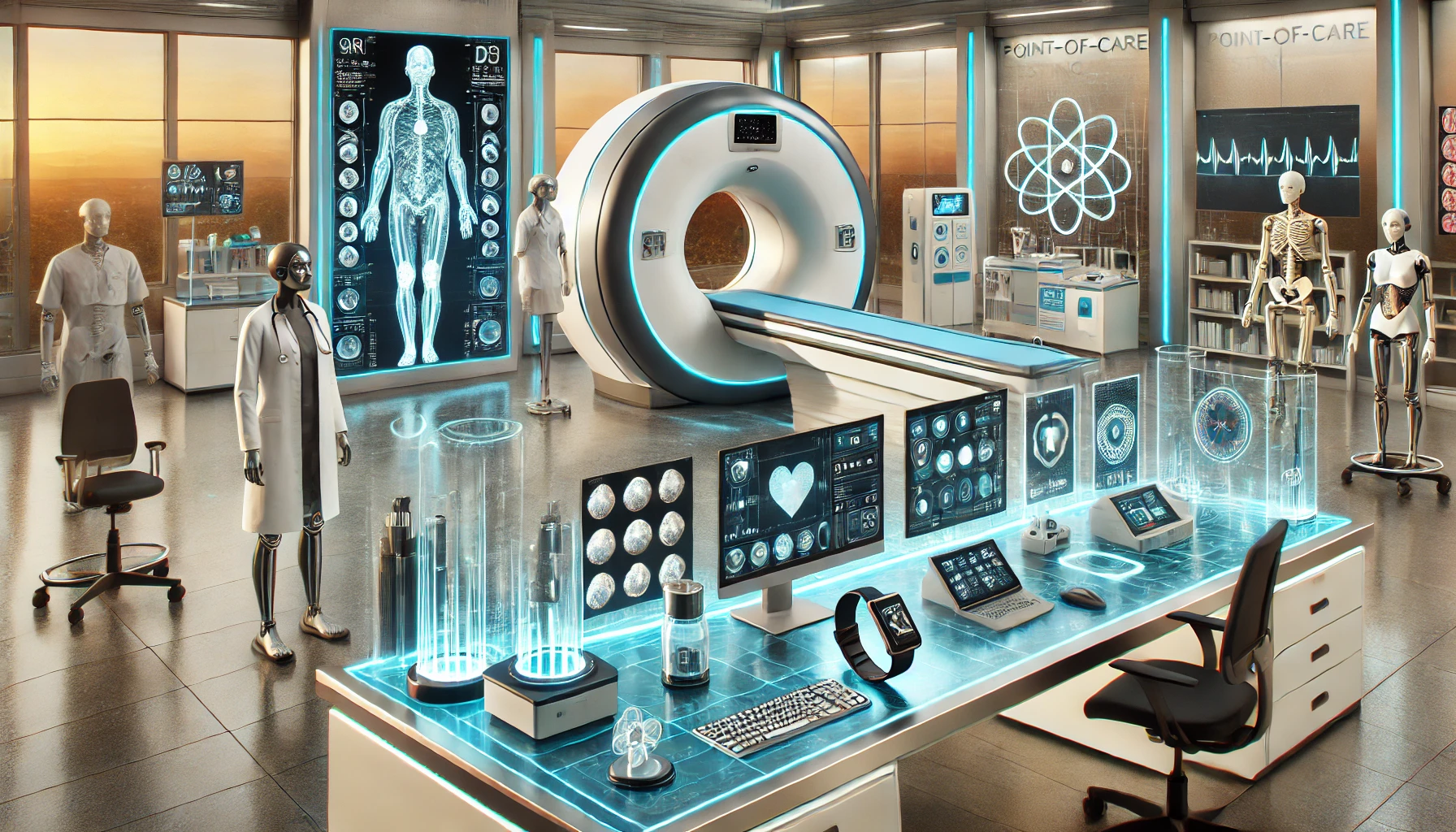
The diagnostic equipment landscape is rapidly evolving due to advancements in technology, increasing demand for precision medicine, and the integration of AI. Here are some essential diagnostic equipment trends and examples expected to play a critical role in the near future:
1. Point-of-Care Testing (POCT) Devices
Trend: Rapid, bedside testing to ensure faster decision-making and treatment.
Examples:
- Handheld Blood Glucose Monitors for diabetes management.
- Portable COVID-19 RT-PCR Devices for infectious disease detection.
- i-STAT System for rapid blood gas and electrolyte analysis.
2. Wearable Diagnostic Devices
Trend: Continuous monitoring of health metrics for chronic diseases and early detection.
Examples:
- ECG Smartwatches (e.g., Apple Watch, Fitbit) for heart rhythm monitoring.
- Continuous Glucose Monitoring (CGM) Systems (e.g., FreeStyle Libre).
- Wearable Blood Pressure Monitors for hypertension management.
3. AI-Powered Imaging Systems
Trend: AI integration in imaging for faster and more accurate analysis.
Examples:
- AI-Enhanced CT Scanners for cancer detection.
- MRI with Deep Learning Algorithms for early Alzheimer’s diagnosis.
- Portable Ultrasound Devices with AI interpretation (e.g., Butterfly iQ).
4. Liquid Biopsy Equipment
Trend: Non-invasive cancer diagnostics using blood samples.
Examples:
- Cell-Free DNA (cfDNA) Analyzers for early cancer detection.
- Circulating Tumor Cell (CTC) Detection Systems.
5. Molecular Diagnostic Tools
Trend: Enhanced accuracy in genetic and infectious disease testing.
Examples:
- Next-Generation Sequencing (NGS) Platforms for genomics.
- CRISPR-Based Diagnostic Tools for specific DNA/RNA identification.
- Multiplex PCR Systems for identifying multiple pathogens simultaneously.
6. Advanced Hematology and Biochemistry Analyzers
Trend: Fully automated systems with integrated data sharing.
Examples:
- Sysmex XN-Series for blood cell analysis.
- Beckman Coulter DxC 700 AU for comprehensive biochemistry testing.
7. Digital Pathology Systems
Trend: Transition from traditional slides to AI-driven digital analysis.
Examples:
- Philips IntelliSite Pathology Solution for AI-based cancer diagnosis.
- 3DHISTECH Slide Scanners for detailed imaging.
8. Telemedicine-Compatible Diagnostic Kits
Trend: Diagnostics integrated with telemedicine for remote consultation.
Examples:
- Digital Stethoscopes for remote auscultation.
- Portable Otoscopes for ENT examinations during teleconsultations.
9. Microfluidic-Based Devices
Trend: Lab-on-a-chip technology for miniaturized diagnostics.
Examples:
- Microfluidic ELISA Platforms for rapid antigen/antibody tests.
- Droplet-Based PCR Systems for precise DNA amplification.
10. Smart Diagnostic Laboratories
Trend: Integration of automation, robotics, and AI for centralized diagnostic efficiency.
Examples:
- Automated Blood Sample Processing Lines (e.g., Roche Cobas).
- Robotic Specimen Handlers for high-throughput labs.
The convergence of technology and healthcare will ensure that these devices improve accessibility, speed, and accuracy of diagnostics in the coming years.





